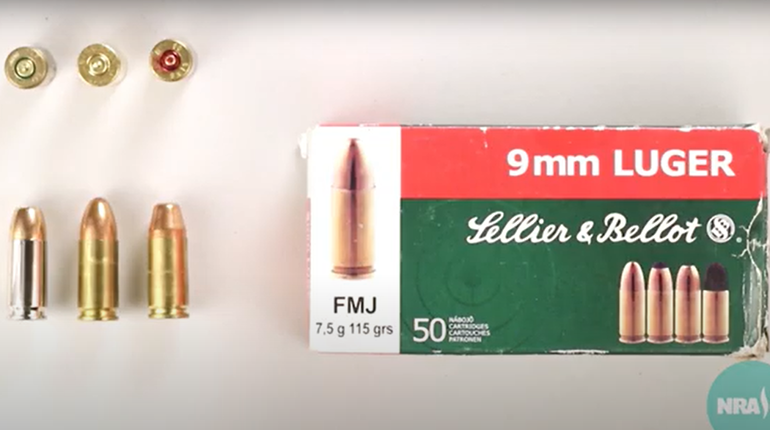
Part of responsible handgun ownership is knowing what every control on your firearm does and how to tell what state it is in with absolute certainty. When we think about this statement, no control bears more weight than the mechanical safety. Not knowing that your safety is off can produce a dangerous scenario when a firearm is to be holstered, while not knowing one is on can present an altogether different danger if it is during a life-or-death situation. However, gaining this knowledge is simple, and we have a few excellent ways of obtaining it.
First, let’s establish that a safety is nothing more than a final failsafe and is never a replacement for proper gun handling. Anything mechanical can and will fail at some point. I teach it like this: Your car has an airbag, right? Do you ever not steer around danger because you know your airbag will save you? Of course not; and that’s why we stay safe by following the Three Rules of Gun Safety at all times: ALWAYS keep the gun pointed in a safe direction; ALWAYS keep your finger off the trigger until ready to shoot; ALWAYS keep the gun unloaded until ready to use.
These days, most handguns have a safety that is built into the trigger blade. The beauty of this design is that it is automatically engaged any time your finger is off the trigger, and comes off the moment your trigger finger lands on the trigger. This system relies on a spring, and like all springs, it will wear out over time. To ensure everything is still intact, simply observe the central blade in the trigger and ensure that it is protruding forward. Then, with the gun unloaded (both magazine and chamber are free of ammunition), as well as pointed in a safe direction, you can then attempt to press the trigger without depressing that blade. If it moves and goes “click,” there is something wrong with it, and you shouldn’t load it until it is corrected by the manufacturer or a certified, competent gunsmith.
Before automatic blade safeties ruled the roost, thumb safeties were the industry standard. These get their name from the digit that is likely to flick them on or off when the pistol is being used. Typically, moving one of these to its downward position is going to take it off and allow it to fire, but not always. There are plenty of guns out there that require it to be flipped up before being capable of firing. It’s essential to know which category your gun falls into as soon as possible, especially if you plan to carry that gun. Again, with the firearm completely unloaded and pointed in a safe direction, press the trigger with the safety in one position and again in the other to determine which position puts the gun in which condition. When the gun goes “click,” you have found the firing position.
A less common safety, and one that is seldom the only one present, is called a grip safety. These devices are built into the backstrap of certain handguns and are deactivated once your hand is firmly planted on the gun. With an unloaded gun pointed in a safe direction, these can be tested in the usual manner, which is advisable if you suspect spring damage. It’s also important to know if your gun has one of these for when you’re testing other safeties. Say you are testing a grip safety but fail to depress the thumb safety before doing so; you may get a false positive on faulty equipment.
This leaves us with revolvers, which are safety-less on many occasions. Sure, most single-actions have a half-cock position, but if you’re not a cowboy, odds are that isn’t your EDC. Instead, most modern defenders that have entrusted their life to a wheelgun have chosen a double action.
Although not intended for carry, many of these guns feature a locking mechanism that locks them from firing. While great for long-term storage, you want to make sure it is disengaged before you leave the house with it in a holster. To do so, refer to the owner’s manual, which will contain special instructions on how to engage this feature. In most cases, the control is deeply recessed into the frame and cannot be viewed to observe which state it is in. In these instances, you’ll need to ensure the gun is empty by first checking every chamber in the cylinder before pointing it in a safe direction and pressing the trigger. If the cylinder rotates and the hammer cocks and falls, your gun is operational.
The last safety that I’d like to discuss is the ambiguous magazine safety, which disables a semi-automatic firearm from firing if a magazine isn’t properly seated. These are a little trickier to confirm correct operation, as the gun needs to be cocked yet unloaded to check.
Start the process by removing all ammunition from the magazine, chamber and any surrounding areas of the firearm. Then, with the magazine removed, pull the slide to the rear, let it return to battery, point the gun in a safe direction, disengage any additional safeties, and then press the trigger. If it clicks, your magazine safety isn’t working. If it doesn’t, then seat a magazine and ensure proper trigger function with it fully seated.
Generally, I don’t recommend guns with this feature for self-defense because if you hit the magazine release during an altercation, you can’t even use the one round that you have in the chamber. I also feel that they condition new shooters to skip clearing the chamber during the unloading process, which builds a dangerous habit. Lastly, I also feel that they promote unsafe handling, as boldly demonstrated in Tiger King.
With a little dry practice, you can learn how your safety operates in just a few minutes. A qualified, NRA-certified instructor can smooth out the process and help to illustrate and correct any dangerous habits that are on the cusp of formation. Information like this, as well as the fundamentals of marksmanship, cleaning and transport, are all covered during the NRA Basic Pistol course, which earns my highest recommendation. These are held across the country, and the closest one to you can be found here!







































